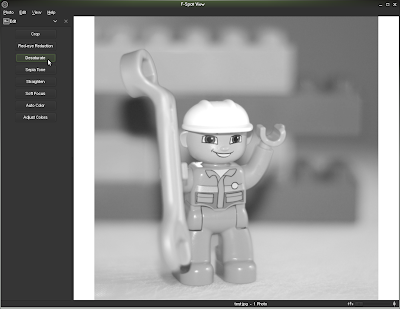 Rumor has it that, during latest UDS, Ubuntu planned to drop Gimp from the default distro and the LiveCD. I won't comment this decision as 1) I have no clue if that's a rumor or more, 2) it was already commented too much, 3) I'm not a whiner, 4) there's a rationale behind that decision and I think I understand it, 5) the full Gimp is only one apt-get away.
Rumor has it that, during latest UDS, Ubuntu planned to drop Gimp from the default distro and the LiveCD. I won't comment this decision as 1) I have no clue if that's a rumor or more, 2) it was already commented too much, 3) I'm not a whiner, 4) there's a rationale behind that decision and I think I understand it, 5) the full Gimp is only one apt-get away.But some were concerned about the lack of basic image editing. Enters F-Spot, the loved Photo Manager and his little brother, the --view mode. The --view mode is a standalone application, which, on top of F-spot loaders and widgets, provide a simple (ala eog) image viewer, which only view the images, and let you browse the metadata. This is it. Or was it 1h30 ago. With very few code, I plugged the main F-Spot editors inside the single view mode. And that worked quite well !
Of course, F-Spot editors are nowhere close to Gimp's, and don't even aim too. But they cover 90% of your daily usage and are (probably) simpler to use than Gimp. And even more, you can write (read contribute) some additional ones in very few lines of code. e.g. the BlackAndWhite extension is 120 lines long with the UI, despite behing optimized to run on Simd !

Expect this to be available soon on git, and a bit later in a release !




